The campfire crackles, casting flickering shadows on the faces gathered around it. Laughter mingles with the aroma of sizzling meat, and a sense of camaraderie fills the air. But this isn’t your typical barbecue – tonight’s menu features a unique and delicious protein: bear meat.
This meat comes from a recent bear hunt, where the experience of tracking and harvesting the bear adds to the appreciation of the meal. Often shrouded in myths and misconceptions, bear meat can be a rewarding addition to your culinary adventures.
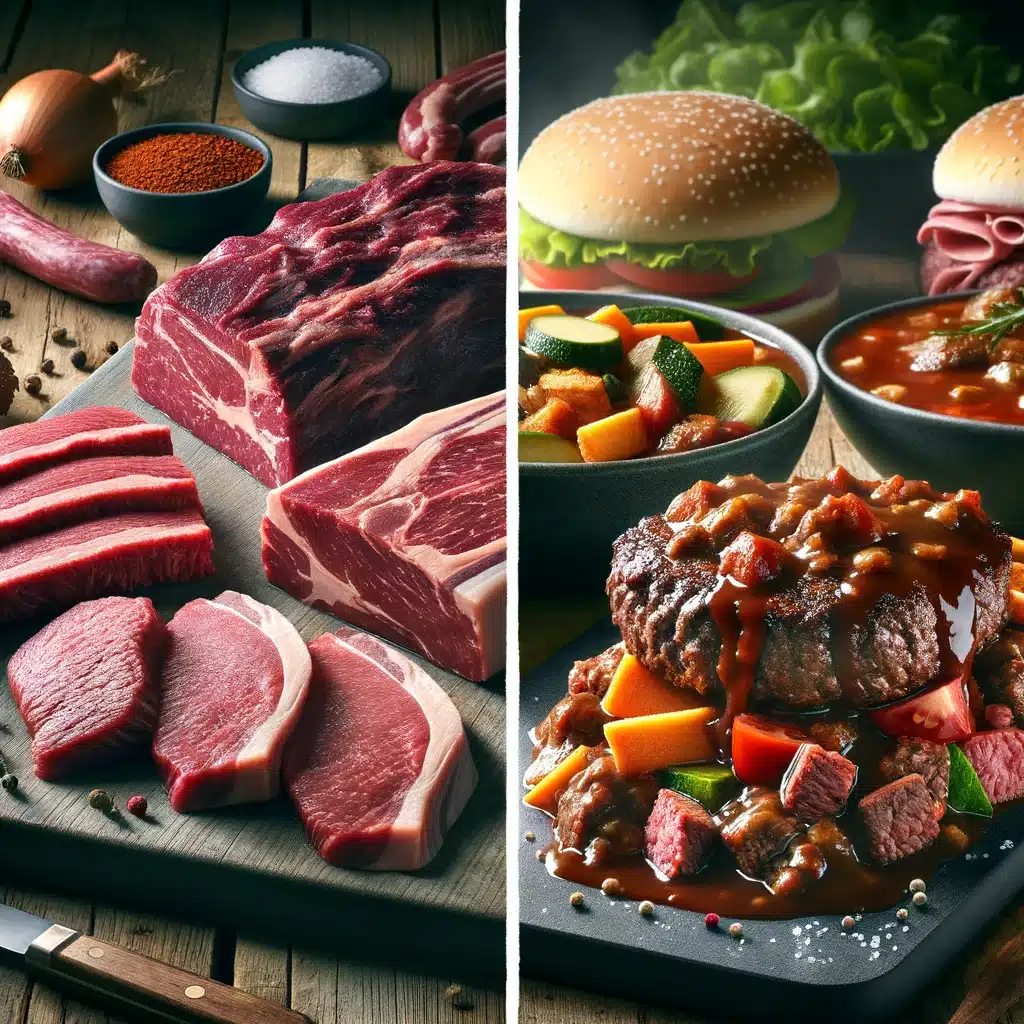
As a seasoned hunter, I’ve spent countless hours in the field, tracking these magnificent creatures and navigating the ever-evolving world of food. When it comes to enjoying a successful hunt’s fruits (or meat?), meat often sparks curiosity and debate.
But here’s the truth: bear meat, when harvested ethically and processed properly, is a delicious, healthy, and sustainable protein source. In this guide, we’ll debunk the myths surrounding bear meat and equip you with the knowledge to process, prepare, and savor this game safely.
So, grab a seat by the virtual campfire, and let’s embark on a journey into the world of meat!
Bear Meat: Beyond the Hype and Misconceptions
There’s a lot of misinformation floating around about bear meat. Some believe it’s tough and gamey, while others worry about safety concerns. Let’s address this head-on:
Myth: Bear Meat is Tough and Unpleasant
Reality: Good bear meat can be incredibly tender and flavorful when processed correctly. The key lies in proper field dressing and butchering techniques, which ensure the meat doesn’t spoil or toughen. Like other red meats, proper marbling and cooking methods, like slow braising or reverse searing for steaks, can further enhance tenderness.
Myth: All Bear Meat Tastes the Same
Reality: Just like different cuts of beef have varying flavors, so does meat. The bear’s diet and habitat can influence the taste. For example, bears that feed heavily on berries might have a slightly sweeter flavor than those with a more protein-rich diet. Different cuts like the backstrap (considered the most prized) offer a milder flavor, while fattier cuts like the shoulder can be richer and gamier.
Myth: Bear Meat is Unhealthy
Reality: Black bear meat is a lean and protein-rich source of nutrition. It’s lower in fat than some cuts of beef and contains essential vitamins and minerals like iron, zinc, and B vitamins. However, it’s important to trim excess fat and avoid overcooking, which can impact its health benefits.
Understanding these realities paves the way for appreciating meat as a delicious and versatile protein source. In the next section, we’ll delve into the safe processing techniques that ensure your meat is high-quality and ready to transform into unforgettable culinary creations.
Processing Bear Meat Safely: From Field to Freezer
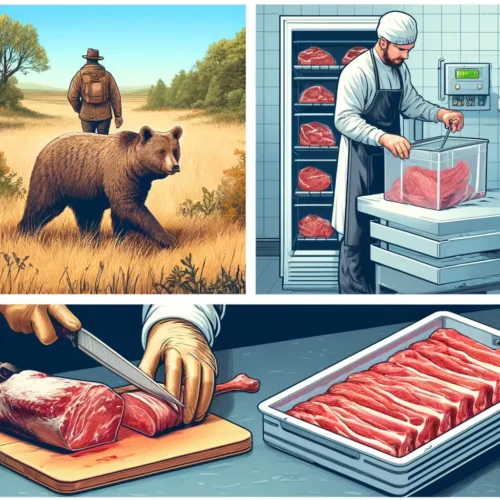
Now that we’ve dispelled the myths surrounding meat let’s explore the responsible processing steps that transform your harvest into delicious meals. Here’s what you need to know:
Prioritize hygiene and safety throughout the processing steps, regardless of your chosen method. Bear fat can be rendered into grease, which is excellent for baking and cooking. It can be used to make biscuits, pie shells, and even waterproof materials.
Field Dressing is Crucial
The time between harvesting and processing is critical for maintaining meat quality. Proper field dressing involves quickly and efficiently removing internal organs to prevent spoilage. The quality of fall bear meat can be influenced by the bear’s diet and fat content, making it essential to handle the meat properly. This process requires specific knowledge and tools – consider consulting experienced hunters or online resources for detailed instructions.
Butchering Options
Two main approaches to butchering your meat are DIY or utilizing a professional butcher.
DIY Butchering: This requires a good understanding of bear anatomy, proper butchering techniques, and the necessary equipment, such as a sharp knife, saw, and cutting board. The quality of meat can vary between a spring bear and a fall bear, with the diet and season affecting the flavor and texture.
Professional Butcher Services: Many processors specialize in handling game, including bears. They possess the expertise and equipment to ensure proper butchering and hygiene practices. This can be a great option for beginners or those who want to save time and ensure professional results.
Prioritize hygiene and safety throughout the processing steps, regardless of your chosen method. Wear gloves, maintain a clean workspace, and keep proper storage temperatures in mind to prevent bacterial growth.
From Field to Feast: Let’s Eat Bear Meat
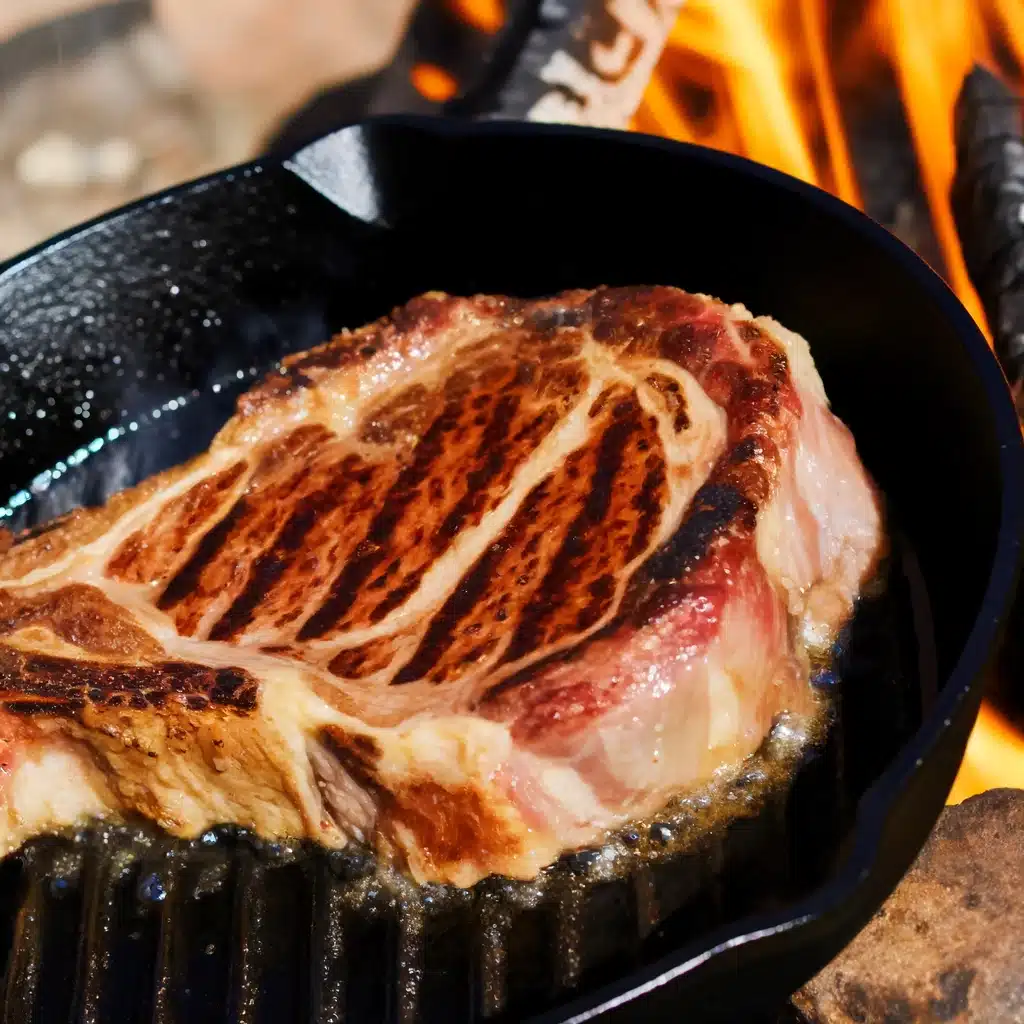
The wait is over! Your bear meat is safely processed and ready for cooking bear meat to unleash its culinary potential. Here’s how to unlock the delicious flavors of this game:
Versatility is Key
Bear meat is surprisingly versatile, lending to various cooking methods and dishes. Think of it as a substitute for other red meats like beef or venison. The possibilities are endless, from succulent steaks and juicy roasts to flavorful ground burgers and hearty stews.
Bear meat generally has a mild, slightly sweet flavor that can vary depending on the cut and the bear’s diet. However, proper cooking techniques are essential to ensure tenderness and avoid gaminess.
Here are some tips:
Marination: Marinating meat in a flavorful blend (think acidic ingredients like vinegar or citrus juices) can help tenderize it and infuse additional flavor.
Low and Slow: For tougher cuts, slow-cooking methods like braising or stewing are ideal, allowing the meat to become melt-in-your-mouth tender.
Respect the Sear: For cuts like steaks, a quick sear over high heat followed by a lower temperature cooking method (reverse searing) helps lock in juices and achieve a perfect sear without overcooking the interior. Searing bear meat with a dry rub seasoning on all sides on a raging hot grill or cast-iron pan before finishing it on a grill or smoker is highly recommended to achieve a tender and juicy finished product.
Embrace the Adventure (with a Recipe or Two)
Ready to embark on your meat culinary adventure? Here are some resources to get you started:
Classic Bear Stew: This hearty and comforting stew showcases the rich flavors of meat. A simple online search yields numerous delicious recipes.
Bear Burgers with a Twist: Ground meat offers a unique twist on classic burgers. Experiment with different spices and toppings to create your signature recipe. A bear roast can also be a delightful dish, offering a tender and flavorful experience when cooked properly.
Remember, the key to meat cookery is proper handling, understanding its unique characteristics, and embracing experimentation. Don’t be afraid to explore different recipes and discover your favorite ways to prepare this delicious wild game.
Respecting the Harvest: Hunting and Sustainability
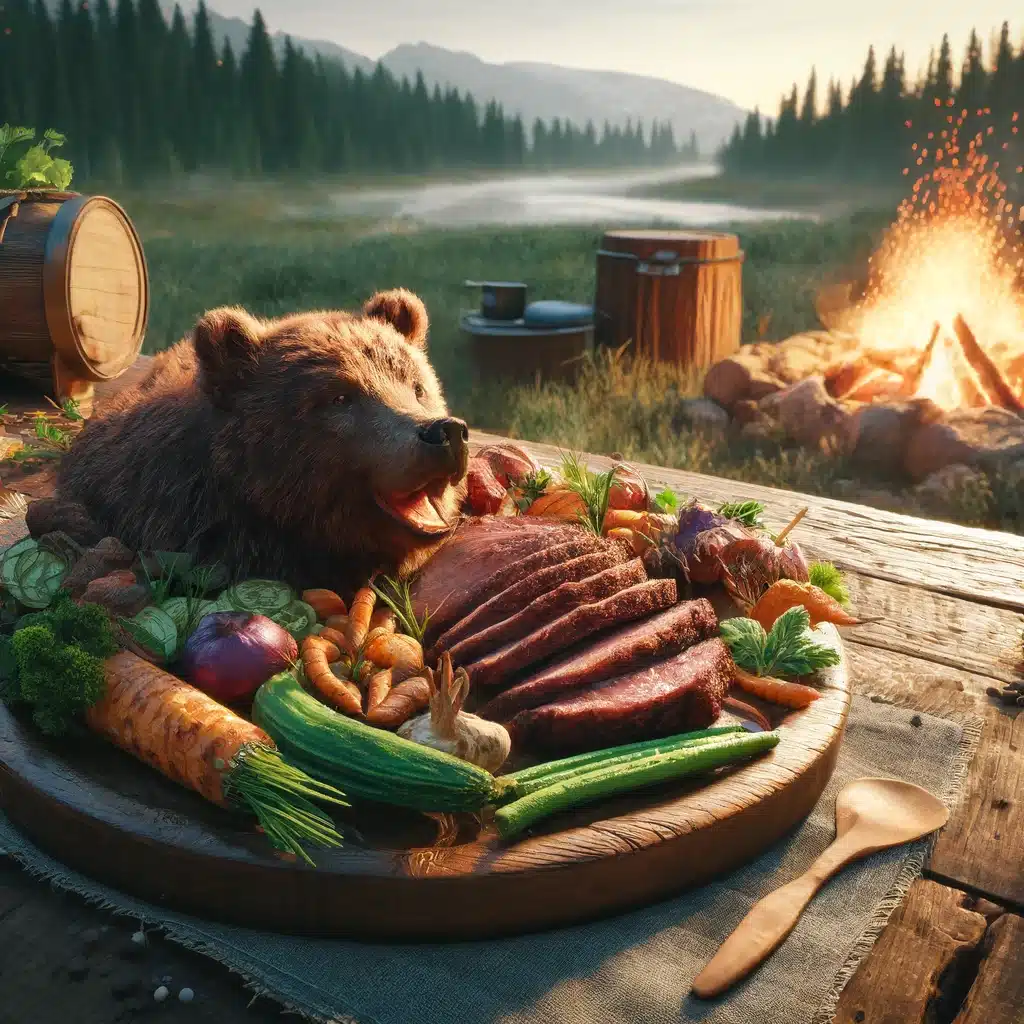
Enjoying the bounty of the hunt goes hand-in-hand with respecting the animals and promoting healthy ecosystems. Here’s why ethical hunting practices are paramount when it comes to meat:
Additionally, consider utilizing all usable parts of the bear, such as the hide for crafting or the fat for rendering. Depending on their feeding habits, fall bears can have edible and delicious meat with layers of fat that can be used for cooking, making bear meat a versatile and flavorful option for various dishes.
Responsible Hunting Licenses and Quotas
Hunting bears is a regulated activity for a reason. Licenses and quotas are established to manage bear populations and ensure long-term sustainability. Always obtain the proper licenses and adhere to all regulations in your hunting area. Managing black bear populations is crucial for maintaining ecological balance and ensuring the health of the species.
Target Selection and Shot Placement (Bear Hunting)
Ethical hunting prioritizes a clean and humane harvest. Hunters should be skilled enough to choose the right bear for their license and ensure a clean, one-shot kill that minimizes suffering.
Respecting the Habitat and Utilizing All Parts
Responsible hunters minimize their impact on the environment. Following proper field dressing techniques and respecting the bear’s habitat are crucial. Additionally, consider utilizing all usable parts of the bear, such as the hide for crafting or the fat for rendering.
By embracing these ethical principles, we ensure bear hunting remains a sustainable practice that allows future generations to appreciate these magnificent animals and the delicious protein source they offer.

Conclusion: Black Bear Meat
The world of bear meat offers a unique and rewarding culinary adventure, allowing you to enjoy bear meat when properly handled and stored. It’s a delicious, protein-rich source of wild game, steeped in tradition and a testament to responsible hunting practices.
Share Your Story: Have you ever had the opportunity to try bear meat? Whether you’ve eaten bear meat before or are curious about it, share your experience and any recipe recommendations in the comments below!
Explore Further: Interested in learning more about your area’s bear hunting regulations (link for CA residents) and ethical practices? Research your local wildlife management agencies or hunting associations for valuable resources.
We hope this guide has sparked your interest in exploring the world of bear meat. With a spirit of adventure, ethical practices, and a dash of culinary creativity, you can unlock a unique and rewarding wild game experience.
FAQs – Eating Bear Meat
Taste and Texture:
Is bear meat good to eat? Yes, it can be quite delicious when prepared properly. It’s dark red meat, often compared to venison or beef, but with a sweeter taste.
What does bear meat taste like? The flavor can vary depending on the bear’s diet. Bears eating a lot of fish may have a stronger, fishier taste.
Is bear meat tough? Bear meat can be tough if not cooked properly. To tenderize it, using low and slow cooking methods or marinating the meat is important.
What is the difference between spring and fall bear meat? Fall bear meat tends to have a higher fat content and richer flavor due to the bears’ diet of berries and nuts. Spring bear meat is leaner and may have a milder taste. Proper handling and cooling are crucial for both to ensure quality.
Safety and Legality:
Is bear meat safe to eat? Bear meat is safe if cooked thoroughly to an internal temperature of 165°F (74°C) to kill parasites like Trichinella.
Can you get sick from eating bear meat? Improperly cooked bear meat can transmit trichinosis, a parasitic infection. Symptoms include fever, muscle aches, and nausea.
Is it legal to sell bear meat? In most places, it’s illegal to sell or barter bear meat. However, possessing and eating bear meat is usually legal if you hunt the bear yourself and follow local regulations.
Preparation and Cooking:
How do you prepare bear meat? It’s important to field dress the bear quickly and keep the meat cool to prevent spoilage. Bear meat benefits from trimming excess fat and can be cooked in various ways, like roasting, stewing, or grinding into sausage.
What are some good recipes for bear meat? Bear meat can be substituted for beef or pork in many recipes. Consider searching for recipes specifically for wild game or venison.
How long do you cook bear meat? Cook bear meat until it reaches an internal temperature of 165°F (74°C) to ensure safety and tenderness.

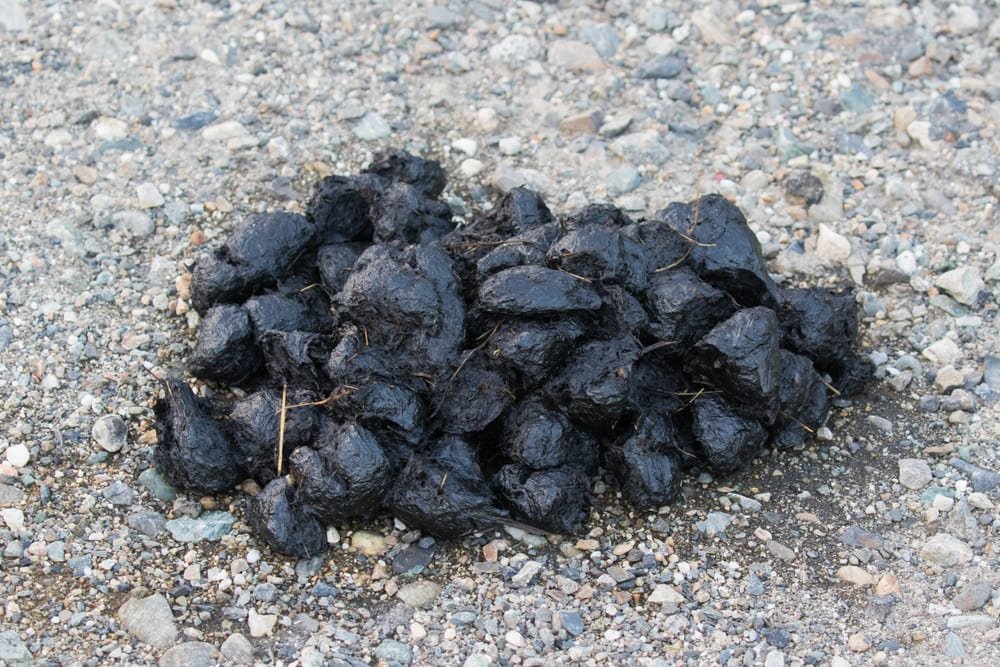


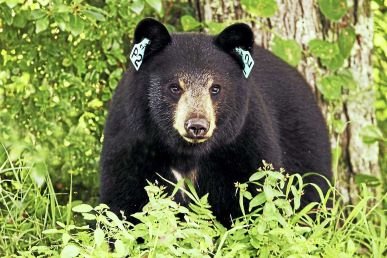

BWER is Iraq’s go-to provider for weighbridges, ensuring durability, accuracy, and cost-efficiency in all weighing solutions, backed by exceptional customer support and maintenance services.